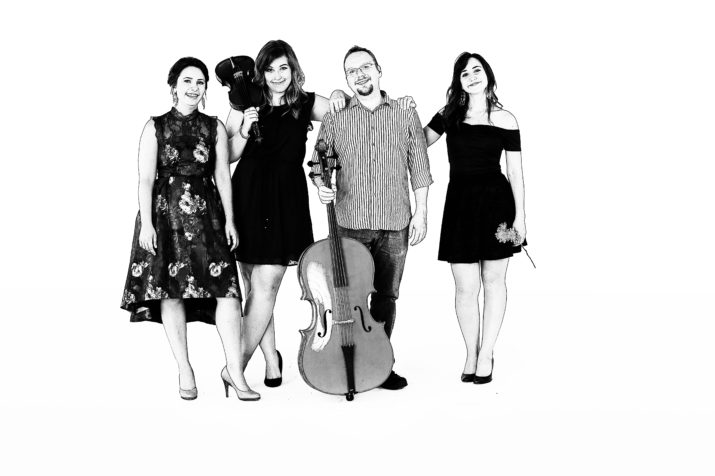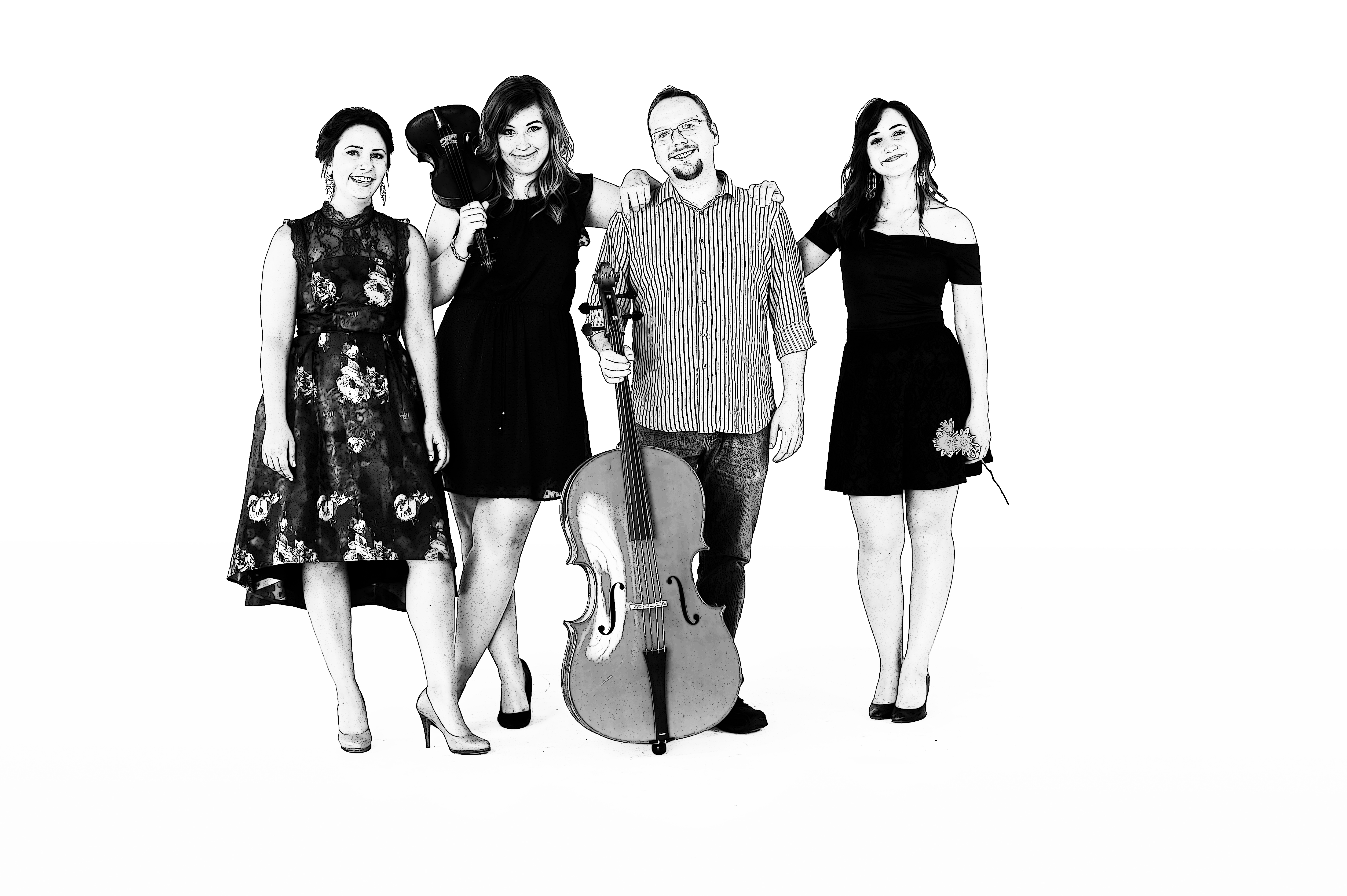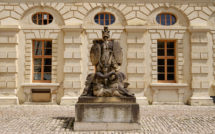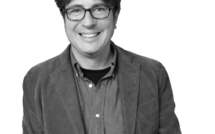
Early Music for 21st-Century Audiences: An Interview with the Founders of Lumedia Musicwork

Lumedia Musicworks is a non-profit performing arts organization based in the Dallas-Fort Worth metroplex, whose goal is to make European classical music from the Middle Ages through the eighteenth century compelling for modern American audiences. After crowd funding over $25,000 for their inaugural 2017–2018 season, Lumedia has produced music videos and several concerts. Founding members Julianna Emanski (Artistic Director), Lauren Stroh (Artistic Video Director), Christopher Phillpott (Librarian and Historian), and Stephanie Raby (Instrumental Director) spoke with me about their passion for the early music of western Europe and finding innovative ways to instill that same passion in a new generation of audience members.
—Andrea Recek for EuropeNow
EuropeNow What was your inspiration to found Lumedia Musicworks?
Julianna Emanski Lumedia Musicworks is a non-profit organization that creates concert seasons equally present in the local community and on the internet. We design our seasons around three words: Collaborate, Innovate, and Captivate. Our “Innovate” productions consist of music videos tailored to tell visual stories and set to classical music. We release them online in hopes that they are enjoyed by the public, that they draw in new classical music listeners, and that they will inspire and educate young people. The “Captivate” concerts more extensively feature Lumedia Musicworks’s musical programming in live concerts across DFW. Finally, our “Collaborate” events involve partnering with local organizations and businesses to plan something musical for their own respective programs, for example by working with a yoga studio and presenting works written for viola da gamba [an instrument from the Renaissance and Baroque eras] as background music, collaborating with a church to help provide music for a special service, or enhancing an environmental conference with a performance of Vivaldi’s nature-inspired Four Seasons.
Our vision for all of this is to expose more people to classical music by bringing it into new spaces in new and creative ways. The structure of Lumedia’s concert seasons opens up an endless possibility of bold and exciting ideas! We love stepping out of the traditional box of classical music performance and have a clear vision to return it to popular and often untraditional milieux where it can be enjoyed, appreciated, and understood by new audiences.
I had started to grow weary of classical concerts, often thinking, “I’m a person who loves music so much that I am getting my doctorate in it! Yet, I can get so bored at concerts. What is happening here?” The answer was to create something more captivating both visually and aurally, while keeping live programs at a length of 60 to 90 minutes.
Regarding the music videos, I had been snooping around YouTube and saw a number of musicians starting to make classical music videos. However, I noticed that none of them told a deep or substantial story to hold a person’s interest. My very good friend, Lauren Stroh, had just released her first music video based on Sans frayeur (Without Fear), a vocal work by seventeenth-century French composer Marc-Antoine Charpentier. This video was different from others I had seen, as it engaged me intellectually, had a clear storyline, and was visually impeccable. I told Lauren how awesome her video was and that I wanted to make this a key part of Lumedia’s programming model. I asked her to be my partner in this endeavor, and she agreed. Currently, these videos are the launching point for the ensemble’s online presence. The videos we create are intended to make people stop, watch, and listen—evolving classical music and providing interesting content that can be understood by new audiences.
EuropeNow How do you define the organization’s mission?
Julianna Emanski This is the mission statement that we advertise and try to impress on our listeners:
To create outstanding musical experiences of the highest caliber in the DFW metroplex
To innovate classical music and the fine arts in a way that is accessible to the broader community
To partner with other organizations, extending the reach of classical music through local and global circles
To awaken a new, younger generation of classical music lovers with captivating high-quality music videos
EuropeNow When most people think of Dallas, classical music isn’t the first thing that comes to mind. How does being based in north Texas affect the Lumedia project?
Stephanie Raby I would say that when people think of Texas as a whole, classical music isn’t the first thing that comes to mind. The main challenge for us is to attract audiences who have little exposure not just to classical music, but especially to music written before 1750. For better or for worse, many people have preconceived ideas about what music written before 1750 sounds like, who plays it, and what they think of it—even though they may not have really heard any. Another challenge is to find players who specialize in this performance practice to play with us. However, there are a couple of major benefits to living and working in north Texas. One is that there is more of an audience willing to attend classical shows (more than in other parts of the state, at least). The other, which pertains specifically to our needs, is that the University of North Texas has a wonderful early music program that plays a major role in training the next generation of players, creating a pool of talent from which we’re able to draw in staffing our productions.
EuropeNow Early music is quite removed from most people’s everyday experience. How do you make this repertoire relevant and accessible to a modern audience?
Julianna Emanski One of the most important practical measures we take towards accessibility is to work within time frames best suited to today’s audiences. In sum, we believe our work benefits most from tailoring to the fast-paced lifestyles to which many listeners would relate. We try to keep the videos between 3 and 7 minutes, and our live performances are never longer than 90 minutes.
We also strive to be very much a part of the current digital age. For our “Wonder Women” concert, the printed programs contained only the most essential information, while we also offered an extended and smartphone-compatible digital program online. We encouraged videos and photos on Instagram and Facebook and invited audience members to tag us in order to be entered to win free tickets to our upcoming “Seeing Double” performances in June. We also designed a Lumedia Musicworks necklace for another Instagram giveaway! Basically, being able to incorporate the technology and social media has been an important way to make our work more available and relatable, while keeping our organization popping up in news feeds.
Perhaps our most effective strategy will be to bring the music to new venues. We plan on having our June “Seeing Double” concerts at a coffeehouse in Dallas and a wine bar in McKinney. Even when we use conventional venues, such as churches, we like to adapt those spaces in order to give audiences a fresh and dynamic new take. Citing the “Wonder Women” concert again, we updated the Gothic-revival building with an inviting blue lighting that shot up the wall and onto the ceiling. This helped create an intimate and mystical atmosphere perfect for our concert theme, which consisted mostly of religious works (a consequence of many of our Wonder Women composers hailing from convents). It made the performance feel more special to the audience and was highly effective with a program that was also semi-choreographed.
Finally, having receptions after our events is very important to us. We find that many musical organizations don’t take time for this, even though it is probably more important now than ever to get to know people face to face and create true and genuine relationships in the midst of heavy social media use. We absolutely want to connect with our audiences personally and get to know them better.
EuropeNow What does European classical music from before 1750 offer to your audience that they can’t get elsewhere?
Stephanie Raby Most popular music written today is very repetitive, often made up of a few chords and steady underlying beats. That’s why you might come across videos on YouTube with musicians playing, say, 25 different songs over the same chord progression. That’s not to argue that the music is bad; in fact, it’s often quite effective. At the same time, however, it is limited in range of expression. Classical musicians, especially composers writing music before 1750, were much more conscious of how musical syntax would affect their listeners and they used this to the best of their advantage. Furthermore, throughout the Renaissance and Baroque periods, there were substantial changes in concepts of harmony, and so not only do you sometimes hear unfamiliar sonorities, but also elements of harmonic experimentation that became lost in classical music of the late 1700s and beyond. The rich musical language of the Baroque era and earlier yields an almost unlimited depth of expression, which can be appealing to today’s audiences.
EuropeNow What would you say are the most compelling features of early music, for you as performers and for your audience?
Stephanie Raby The most compelling feature for me, and I believe for our audience as well, is the excitement of discovery. As performers, we often play works that audiences haven’t heard since they were written, so we have a certain freedom of interpretation. Also, early music that is well known, such as Vivaldi’s Four Seasons or Pachelbel’s Canon in D, has often been interpreted through the lens of modern performance practice that doesn’t necessarily line up with the practices from the time they were written. Consequently, we can take these pieces and play them in a way that few people have ever heard! Beyond this, very much like jazz, early music celebrates improvisation and individual interpretation. An audience member can hear three different people play the same piece and notice it done differently every time.
EuropeNow What do you look for in the repertoire you choose for your music videos? How is choosing repertoire for a video different from choosing repertoire for a live concert?
Julianna Emanski When sifting through ideas for music videos, we start with the music itself, listening to it, and most importantly, relating personally to it. Sometimes our readings will fall in line with the composer’s intentions, and other times they come from our own creative interpretations. We have a Google Doc that we all share to jot down our ideas. We’ll select a piece, paste a link to a recording, write a brief summary of our interpretation, and determine the minimum instrumentation needed to perform the music, as well as the ideal number of musicians needed (budget is always a major factor). As I mentioned before, the music videos are 3–7 minutes in length.
Regarding content, it’s important that the pieces offer some flexibility in shaping our stories, which are intended to be interpreted individually, piquing the viewer’s interest. How you, the viewer, interpret the video is part of the artistry of the film and helps to make it broadly relatable and powerful all at the same time. For example, on our last video [see link at the end of the article] we had so many comments from people about how they interpreted the significance of the umbrellas, the characters, even the gazebo had intentional meaning for some viewers. No one was right or wrong in their reading of the film, but what was interesting was that their own life experiences clearly affected interpretation, and that was exactly what we wanted.
Lauren Stroh To be honest, I don’t feel like we choose the music for the videos. It chooses us! As silly as that may sound, so far the music has come to me personally in ways that have captivated, startled, or awakened within. Although the stories leave room for interpretation, they are truly works of self-expression and human experience. I feel most comfortable expressing joy, beauty, pain, or longing in music, rather than with words. The videos take this expression to the next level, adding imagery. When I happened upon the piece for my video the Julianna mentioned, I was immediately in love with the way the sounds transported me to memories of a childhood dream: dancing in the woods, warmth, bubbling joy.
In the most recent video, based on the medieval song Quant je parti (When I Am Gone) both myself and a few of my collaborators were struggling with intense loss in our personal lives. We originally had hoped to begin the season with a joyful tone, but this mournful piece about saying goodbye kept returning to us and we decided to allow this organic bloom of human self-expression to take root. This kind of meaningful and genuine outpouring of experience also allowed us to share an authentic part of our hearts and minds as we labored to bring our inner wounds to life and into the light. It is in this light that we find healing and connection. This is the whole reason I wish to create videos: connection. Connection to each other within the Lumedia team, connection to the viewers who have also experienced human highs and lows, connection to the composers and musical performers from past ages who have felt similar emotions, connection to the self as we dig into the richness of past and present experience, desire, and self-awareness.
EuropeNow How did you decide on the theme “Wonder Women” for your first concert? How did you pick the repertoire?
Julianna Emanski As a group of mostly women who have dedicated a large portion of our musical study to historical performance, we wanted to start our season by exploring notable women of the Baroque period and earlier who made an impact on music either through their own contributions or as inspirations to others. As women living in the 21st century and trying to share our passion for early repertoire with others, we also collaborated with an amazing local visual artist to interpret one of the works we performed and bring it to life in a contemporary painting.
EuropeNow You mentioned that some of the repertoire you perform may not have been performed in the centuries since it was written. Do you make your own transcriptions and arrangements?
Christopher Phillpott We run into many situations in which it’s best to prepare our own editions. This is crucial when performing works only available in manuscript or original print. It’s also necessary when we come across works that have been published but contain editing practices that are often not faithful to original source material, i.e. publications from the 19th and early 20th centuries that include painstakingly added dynamics, articulation marks incongruous with performance practice, and even embellishments and additions not differentiated from original material. This is not to say that we don’t believe in taking our own creative liberties with the music, but we like to work from as clean a slate as possible while delineating carefully between our interpretations and what the composer makes known. In short, our interpretations should be well informed.
Our editions are based on original sources, whether they are manuscripts or first printings. We also try to make them as close to Urtexts [scholarly critical editions] as possible while still rendering them practical for use by present-day musicians. If some information in a primary source is ambiguous, contradictory, or missing altogether, we develop our own performance solutions while reminding the reader that they are simply interpretations. We want our printings to be usable by insightful musicians who may have their own ideas for bringing the music to life. All the while, we want to be conscious of practicality for modern performance. This is especially key for works originally notated under different systems, such as those from the Middle Ages and Renaissance. Not only do we transcribe such pieces into modern notation, but we also lay them out in a way best suited for ease of learning. For example, when we performed one of the Cantigas de Santa Maria back in December, we rewrote the musical verse several times so that every two stanzas of poetry could have musical overlay and therefore be more easily readable. At the same time, we left extra blank space between verses so that vocalists could write in pronunciations over the obscure Galician dialect. Eventually, we hope to make editions available for purchase at a fraction of the cost of most well known Urtexts.
EuropeNow How has the response to Lumedia that you’ve received so far relate to what you expected?
Julianna Emanski The response to our first concert far exceeded my expectations. We were taking a chance, diving into music that we absolutely loved but were not sure we could pull off. Taking the risk with the repertoire we chose materialized into an overwhelmingly well-received performance. The show in Dallas was very well attended, and afterwards audience members approached us so enthusiastically, saying, “That was the best performance I have ever been to!” “I want more people to experience this!” “What can we do to support you?”
On a personal note, I chuckled at the reaction of my fiancé’s brother, who came simply to offer support. Going into it with little knowledge of or affection for classical music, he started to inundate us with question after the concert and demonstrated a real interest in hearing more music like it. My fiancé is new to classical music himself, and after he attended both events he commented on the acoustics of the different venues. On the second night I even caught him bopping his head along with the music! With these little stories, I would say we have begun advancing our vision for the company.
Click here to visit Lumedia’s website.
Julianna Emanski has 20 years of performing experience with specializations in Classical and Baroque repertoire. She holds a BM in Music Education from Temple University, an artist diploma in Baroque music from Cornish College of the Arts, and an MM in vocal performance. She is currently pursuing a DMA in vocal performance and music entrepreneurship at the University of North Texas.
Lauren Stroh has 20 years of experience in performing classical music, with specializations in organ performance and voice. She holds a BM in organ performance from Oberlin College and is currently finishing her MA in counseling from the University of North Texas.
Christopher Phillpott has over 20 years of experience as a cellist and gamba player, specializing in historical music performance. He holds undergraduate and graduate degrees in cello and historical musicology from Texas Christian University as well as an early music certificate from Florida State University.
Stephanie Raby has 25 years of experience in performing classical music, specializing in Baroque repertoire and playing a multitude of instruments including violin, viola, viola da gamba, and vielle. She holds a BM from the University of North Texas and an MM in Baroque violin performance from Indiana University.
Andrea Recek is a doctoral candidate in music history at the University of North Texas. She holds a BA in music and an MA in music history from the University of Oregon. Andrea is a 2017–2018 Mellon-CES Dissertation Completion Fellow.




